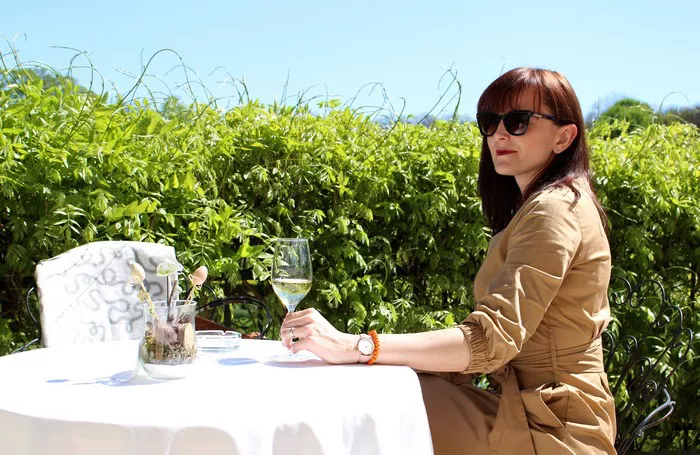Sancerre wine, hailing from the picturesque Loire Valley of France, is celebrated for its elegance, versatility, and the unique terroir from which it emerges. Nestled in the heart of France, the Sancerre appellation is renowned for its crisp, mineral-driven Sauvignon Blanc wines, though it also produces delicate Pinot Noir. In this comprehensive guide, we will embark on a journey through the vineyards of Sancerre, exploring the essence of Sancerre wine, its characteristics, history, and the art of savoring this classic French varietal. By the end of this article, you’ll have a profound understanding of what Sancerre wine is truly like.
I. The Allure of Sancerre
Sancerre is a small, charming wine-producing region located in the eastern part of the Loire Valley, specifically within the Central Vineyards of France. It enjoys a reputation for producing some of the finest Sauvignon Blanc wines in the world. These wines are cherished for their vivacious acidity, bright fruit flavors, and distinctive mineral qualities. Sancerre is often hailed as a benchmark for Sauvignon Blanc, setting the standard for the varietal’s expression.
II. Terroir of Sancerre
Sancerre’s terroir is a key factor in shaping the character of its wines. The region is renowned for its diverse soils, which include limestone, marl, and flint (known as “silex”). These soil types contribute to the distinct minerality found in Sancerre wines. The vineyards benefit from the cool climate and the moderating influence of the Loire River, which helps to maintain the acidity and freshness of the grapes.
III. Sancerre’s Signature Grape: Sauvignon Blanc
The primary grape variety cultivated in Sancerre is Sauvignon Blanc, which accounts for approximately 80% of the region’s vineyard plantings. Sauvignon Blanc vines thrive in Sancerre’s terroir, and the grapes exhibit a unique expression in this region. Sancerre Sauvignon Blanc is celebrated for its vibrant acidity and a complex spectrum of flavors, including green apple, gooseberry, citrus, and a distinctive flinty, mineral character.
IV. The Art of Sancerre Winemaking
Sancerre winemakers employ traditional winemaking techniques, emphasizing minimal intervention to allow the terroir to shine through. The grapes are typically harvested by hand to ensure quality selection, and gentle pressing is used to extract the juice. Fermentation can occur in stainless steel tanks, oak barrels, or a combination of both, depending on the style the winemaker seeks to achieve.
Stainless Steel Fermentation: Stainless steel tanks are often used for fermentation when the goal is to preserve the fresh and crisp qualities of the fruit. This method accentuates the primary fruit flavors and the mineral characteristics that define Sancerre.
Oak Aging: Some Sancerre producers choose to age their wines in oak barrels. This method can impart additional layers of complexity, with flavors like vanilla, toast, and cream. The use of oak is typically more restrained in Sancerre than in regions like Burgundy.
V. Sancerre Styles
Sancerre wines come in various styles, reflecting the diversity of the terroir and the preferences of the winemakers. Here are the main styles of Sancerre wine:
Sancerre Blanc: The classic Sancerre style is white wine made from 100% Sauvignon Blanc. These wines are known for their vibrant acidity, bright fruit flavors, and mineral notes. They are often crisp, refreshing, and ideal for pairing with a wide range of dishes.
Sancerre Rosé: Sancerre also produces elegant rosé wines, which are crafted from Pinot Noir grapes. Sancerre rosé wines are delicate, with bright berry flavors and a refreshing character. They are perfect for warm-weather sipping and pairing with light cuisine.
Sancerre Rouge: Sancerre red wines are made from Pinot Noir grapes. They are known for their finesse, displaying red fruit flavors, subtle earthiness, and a graceful, silky texture. These wines are versatile and pair well with various dishes, including poultry, game, and mushroom-based recipes.
VI. Sancerre Wine Regions
The Sancerre appellation is divided into three distinct wine-producing regions, each with its unique characteristics:
Sancerre: The main and largest region of the appellation, where most of the Sauvignon Blanc is grown. The soils here are quite diverse, with flint-rich areas known for their minerality.
Sancerre-Chavignol: This subregion is renowned for producing some of the most age-worthy and mineral-driven Sancerre wines. It is famous for its vineyards planted on Kimmeridgian limestone soils, which are shared with neighboring Chablis.
Sancerre-Menetou-Salon: Located to the north of Sancerre, this subregion is known for its slightly cooler climate and limestone soils. It is one of the most promising areas for producing expressive Sauvignon Blanc wines.
VII. The Savoring Experience
Savoring a glass of Sancerre is a delightful experience. The wine’s vibrant acidity and complex flavor profile make it a versatile companion to various culinary delights. Here are some tips for savoring Sancerre:
Glassware: Use a white wine glass with a moderately narrow bowl to concentrate the wine’s aromas and capture its fine nuances.
Temperature: Serve Sancerre Blanc chilled, typically between 45-55°F (7-13°C). The cooler temperature accentuates the wine’s acidity and freshness.
Aromas: Take a moment to inhale the wine’s aromas, which may include notes of citrus, green apple, gooseberry, and the characteristic flinty minerality.
Taste: Sip slowly and savor the wine’s lively acidity and the interplay of fruit flavors and minerals. The finish is often crisp and refreshing.
Food Pairing: Sancerre Blanc is a versatile pairing wine. It complements seafood, poultry, salads, and dishes with goat cheese. Sancerre rosé and red wines pair well with charcuterie, roasted poultry, and lighter red meat dishes.
Conclusion
Sancerre wine, with its vibrant acidity, diverse flavors, and characteristic minerality, is a testament to the beauty of the Loire Valley’s terroir. It epitomizes the elegance and versatility of Sauvignon Blanc, showcasing the magic that happens when climate, soil, and winemaking expertise unite. As you continue to explore the world of wine, may your appreciation for Sancerre grow, and may you savor the unique qualities that define this classic French varietal.


